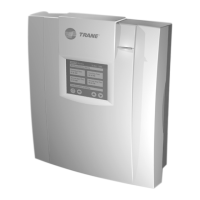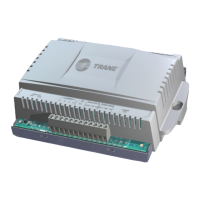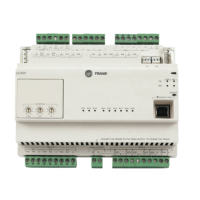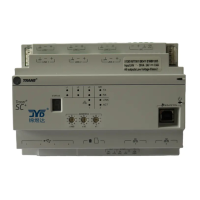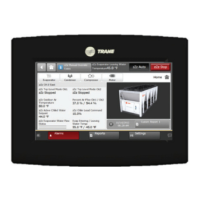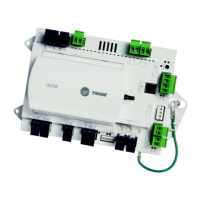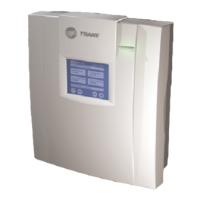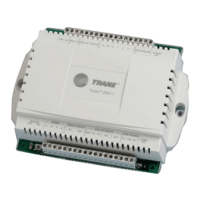Chapter 8 Using the Occupancy and PID blocks
94 CNT-SVP01C-EN
become more complex. The program is shown and discussed in each
example.
Using the Occupancy block to turn on a supply fan
In the example shown in Figure 65, the program takes advantage of the
fact that the Occupancy block output is an analog value. It uses an Equal
block to compare the Occupancy block output to a Constant block. If the
Occupancy block output is equal to zero, the output of the Equal block is
true, and the Supply Fan Start/Stop binary output is true (on). If the
Occupancy block output is not equal to zero, the Supply Fan Start/Stop
binary output is false (off).
Figure 65. Supply fan on or off with an Equal block and a Constant
block
The use of the Equal block and a Constant block is acceptable for the pro-
gram in Figure 65. But it can become awkward as you use more of the
Occupancy block output values. Each value would have to have an associ-
ated Equal and Constant block. Alleviate the awkwardness by using the
DeEnumerator block shown in Figure 66.
Figure 66. Supply fan on or off with a DeEnumerator block
The program in Figure 66 completes the same function as the program in
Figure 65. The DeEnumerator block takes the place of the Equal and
Constant blocks. For more information about the DeEnumerator block see
the block reference in online Help in the TGP editor.
Using the Occupancy block to adjust setpoints
The program in Figure 67 on page 95 provides two values, the cooling and
heating setpoints, to other parts of a TGP program. The DeEnumerator
block controls which value is passed by using a pair of Switch blocks. For
more information on how the Switch block works see the block reference
online Help in the TGP editor.
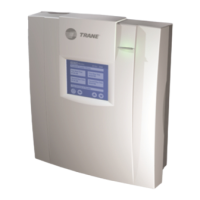
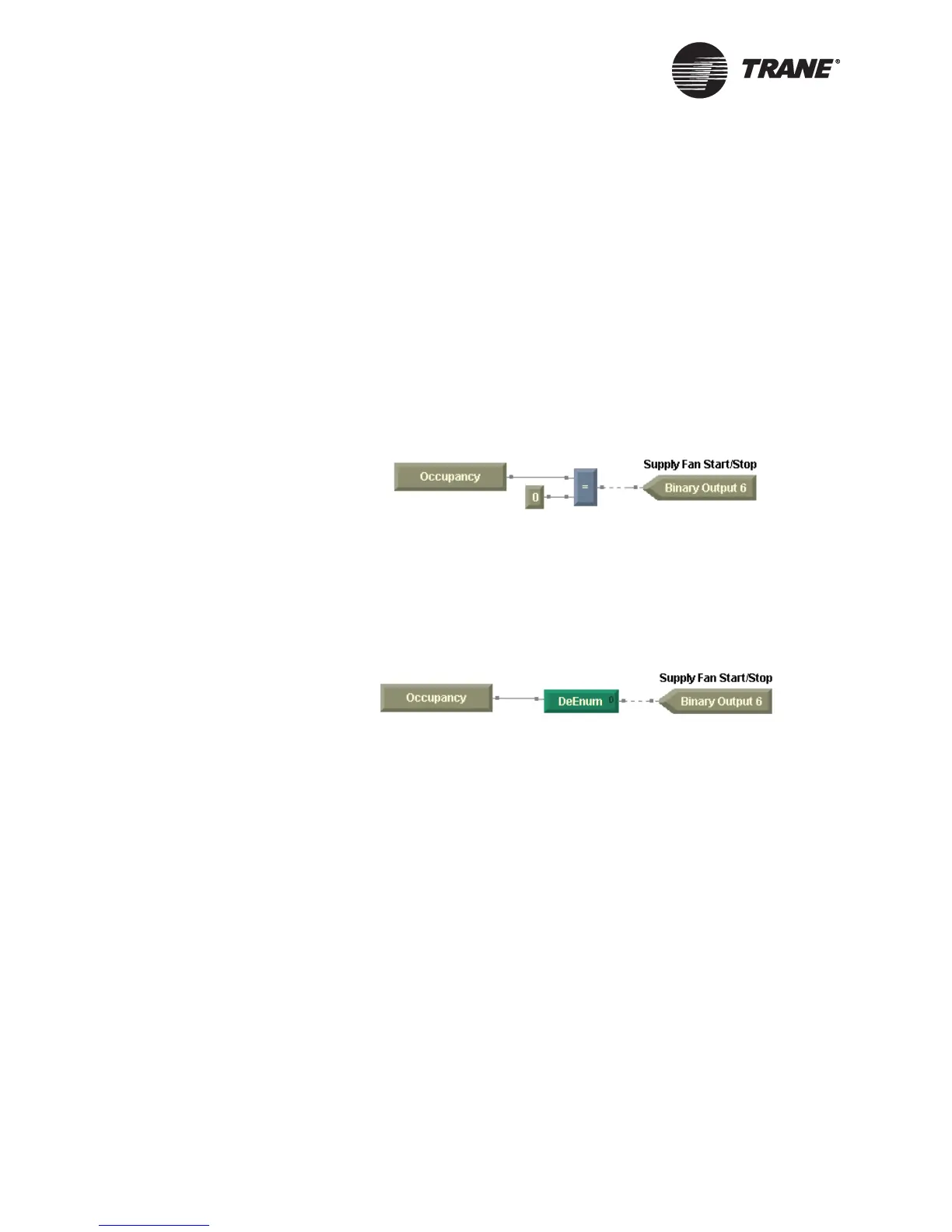